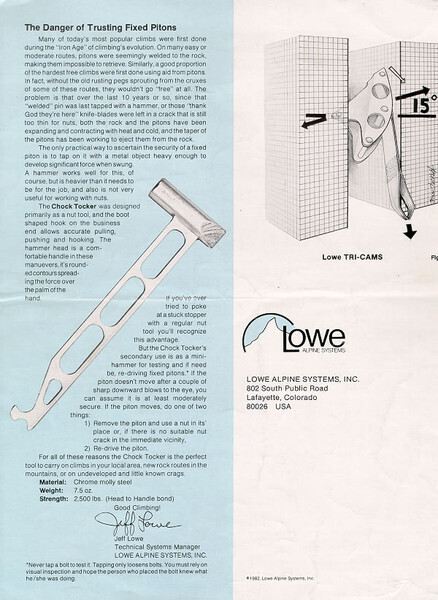Washington Pass – 3 Fatalities Rappelling on NEWS
|
|
Bad accident in the North Cascades over the weekend. Condolences to family and friends. Anybody have any information about this accident beyond what the media is reporting? Edit: I started this thread after frantically confirming it wasn't any of my immediate circle who were killed or injured, and I should have put more thought into framing the thread. Thanks everyone for keeping the discussion respectful. Surely Anton will carry this forever. |
|
|
Piecing together information from a bunch of articles looks like it was during the descent. I've been on South Early Winters Spire (SEWS) and not NEWS and it was all tat rappels, is that the same for NEWS?
|
|
|
Absolutely terrible. If the team was indeed on North Early Winters Spire (initial reports like this are often full of errors so it's not a given), I am curious if they were descending the Chockstone Gully or perhaps even Early Winters Couloir. |
|
|
Article in The Seattle Times says they were climbing Early Winters Couloir and were bailing due to incoming weather: seattletimes.com/seattle-ne… |
|
|
Broccoli Eater wrote: There is a bolted descent route on NEWS but its not obvious, and i believe some guidebooks and even the mountain project entry for NEWS still list the gulley/couliour as the descent. My one and only time descending the gulley was a less then desirable experience. |
|
|
Broccoli Eater wrote: Bolted rap line on North. Unusual to be rock climbing so early in the season up there. Still mostly ski touring season. |
|
|
Jimmy Downhillinthesnow wrote: Per the Seattle Times article, they were rapping Early Winter Couloir which has no fixed anchors. EWC is a mixed route rated M4, not really a rock climb. My heart goes out to the friends and families of the deceased, the surviving climber, the rescuers who performed the body recovery, and our Cascades climbing community. Please take care of yourselves. As someone who has partaken in rescues and recoveries, I have been there. Please reach out to me if you'd like to talk, I'd be more than happy to hear from you. |
|
|
Being a mostly fair weather rock climber, this statement in the Seattle Times article caught my attention: ‘All four were tied to the same anchor point, which Yarnell said is “not preferred.” ‘ Can anyone put that into the context of EWC (of which I know nothing). Is it as simple as “Don’t put your eggs in one basket” when it comes to ad hoc anchors? |
|
|
Nick Sweeney wrote: That makes sense. |
|
|
Rest in peace. . . |
|
|
Bill Lawry wrote: The EWC does not have fixed rappel anchors. Those ascending EWC to the summit of NEWS descend a different route. The reports note they were descending EWC thus building their own anchors. In some locations one would be using rock pro but in others snow/ice anchors. When I have descended using snow/ice or marginal anchors we might or might not all be tied into the anchor - depends on the slope and the implications. I often use my ice tools as my own "personal" anchors. In 1997 a person I knew died when an avalanche swept him away at the rappel. Jim Bridwell tells the story of descending after climbing the East Face of Moose's Tooth with with Mugs Stump in Alaska. They got to a shitty rock stance, found a place for one small nut, they were both clipped to it. Jim started rappelling when Mugs almost decided to unclip figuring that if it failed he would not die. But if that happened he would be stuck there, only to slowly die and decided a faster death would be better. In a situation when using a snow/ice anchor one sets the primary anchor say a v-thread or bollard. Then one sets additional anchors ice screw/picket to back that up. Everyone rappels. The last person pulls all of the additional anchors. As there was a survivor it will be interesting to read the exact chain of events. |
|
|
It seems the article was updated with more details at some point. "After examining the equipment late Monday, Woodworth said it appeared the anchor point - known as a piton - ripped out of the rock." |
|
|
Thank you, Allen. And well said. Left behind half a rack once descending a non-standard way. 9 rappels if I recall correctly, with fewer gear options as we went. |
|
|
The stuff of nightmares! I offer my sincere condolences to the Fallen Climbers their Families and many friends. |
|
|
Jimmy Downhillinthesnow wrote: i was up there the weekend after the road opened (4/26) and we climbed the sw rib with no issues. great weather and dry rock. we brought our pointy stuff to maybe try the couloir but took one look at the EWC and the temps and decided it was out already. to be fair we were the only party rock climbing basically everyone else was touring...there was also some sketchy rappelling happening in the southwest couloir by another party. we could see some of the stations as we descended the south arete and they were definitely also "less than desirable". Mainly pointing this out since more people should just top out and take established descents instead of pioneering rap lines in gullys with the worst rock on the mountain. |
|
|
https://www.cnn.com/2025/05/14/us/triple-fatal-climbing-fall
|
|
|
After reading the CNN article (which is reasonably written). This quote by the leader of the sheriff’s search and rescue team is of note:
Some speculation on my part. From everything written it would appear that the group was tied into a single piton with no backup (no other gear is mentioned). Given the slope it was probably not fully weighted until one person started to rappel. During the rappel the piton pulled with the subsequent fall pulling everyone else. Given the description, "old piton" I will that take to mean previously set as pitons can rust pretty quickly. One of the issues with pitons in the alpine environment is just not their rusting and disintegrating but the freeze thaw (expansion contraction) cycle of the rock which over time will loosen pitons. My educated guess is that the group did not inspect/test the piton before relying on it. Which is unfortunate because for the climb I would assume that each person climbing was using two tools, thus having an axe and hammer. Someone could have tested the pin. Years ago while bailing off a climb in the Canadian Rockies we faced a similar situation. Came across a single pin which to rappel from. I ended up pulling the pin and resetting it. We backed it up and my partner being heavier rappelled first. When I rappelled I removed the backup gear. In the mean time my partner had created a stance and tied the ropes into that gear. If the pin pulled I was going to take a huge fall but hopefully the gear below would hold the fall (and I would have a chance at surviving the fall). For over 40 years I have carried a nut tool, a Lowe Chock Tocker. It is old school and though "heavy" IMHO it is the best nut tool ever made, especially for alpine climbs. I have used it to test many a piton. In fact, I used it this past weekend to test a piton (though at a belay we did not use it). Note the advert which is from 1982 and the treatise on "The Danger of Trusting Fixed Pitons." It is even more relevant today. As I noted above it will be interesting to read the exact chain of events. Hopefully the survivor is making a speedy recovery. |
|
|
Really truly tragic. I can't imagine the grief and trauma being experienced by the climber that was spared. Look your climbing partners in the eyes and tell them you love them next time you see them. |
|
|
amarius wrote: “eventually, over at least a dozen hours, made the trek to the pay phone,” Im not aware of any pay phones at WA pass. Condolences to all involved and best wishes to the survivor for a full recovery |
|
|
A previous article I read said the party was retreating because of weather, not pioneering a new rappel line. This is where my brain goes… At the time, they made a choice as a group based on their real conditions on the ground. They had four brains working together to get themselves to safely during what would have been a stressful descent. We all learn the rules about redundancy in anchors early on so if they were connected to a single piton, I would guess it was their only choice (based on their actual situation). Unfortunately, when recreating outside we get the reality that is in front of us, not the reality we want. Any of us could be in a similar situation tomorrow, having to make similar decisions with less than ideal options under stressful conditions. It’s part of the deal we make to to do this thing that feeds our soul so completely. |
|
|

 Continue with onX Maps
Continue with onX Maps Sign in with Facebook
Sign in with Facebook


























